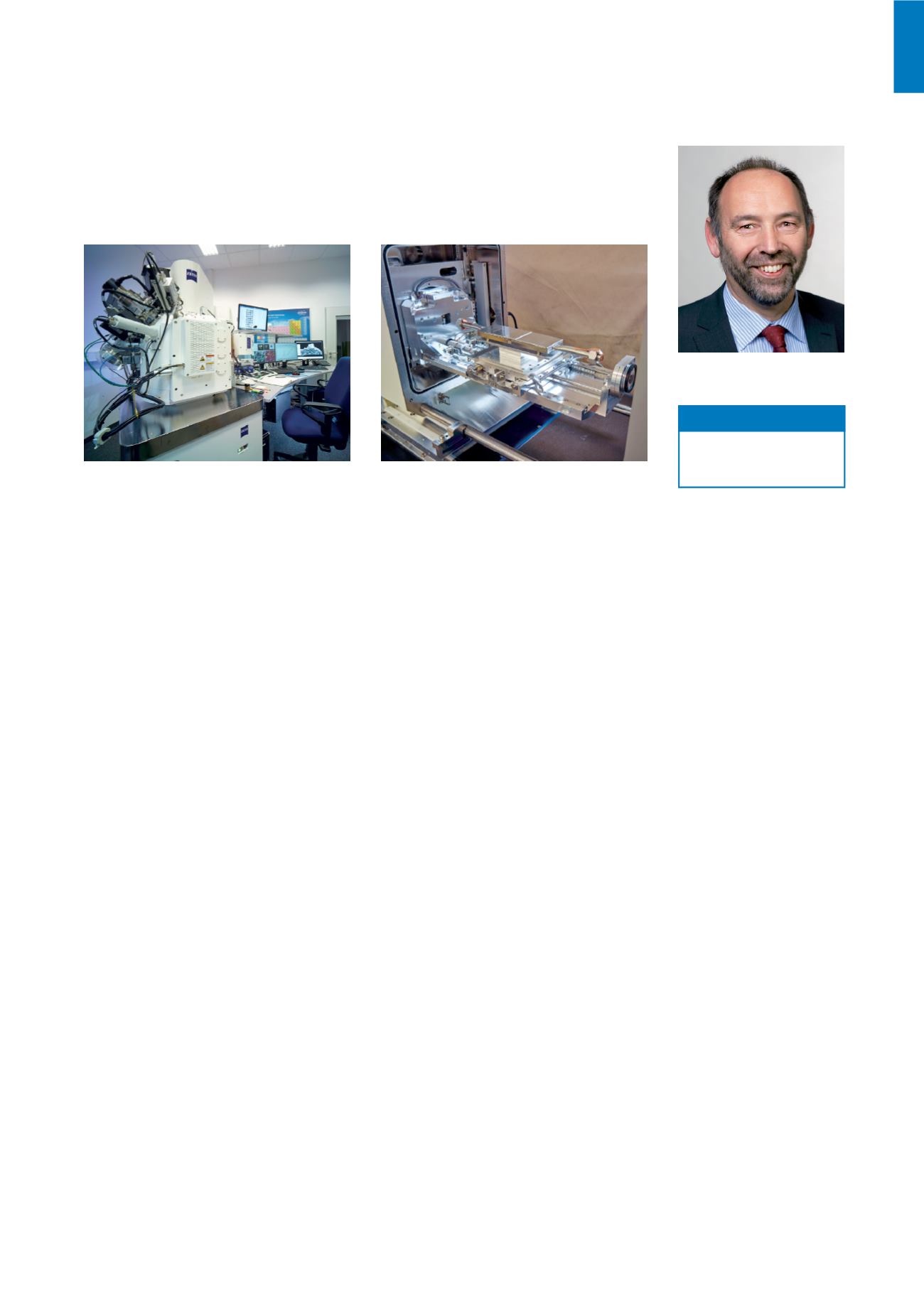

Plasma Material Interaction
209
Plasma Material Interaction
Properties and optimisation of materials facing high temperature plasmas
Prof. Dr. Rudolf Neu
n
The highlight for the Plasma Material Interaction Group in 2016 was the
commissioning of a new scanning electron microscope which allows the
manipulation of samples with up to 10 kg weight and a size of up to 450 x
200 x 65 mm³.
The highlight for the Plasma Material
Interaction Group in 2016 was the
commissioning of a new scanning electron
microscope (SEM) equipped with a
focused ion beam (FIB) and combined
energy and wavelength dispersive x-ray
spectroscopy (EDX/WDX). Scanning
electron microscopy is one of the major
tools for the investigation of materials
which were exposed to plasma, because
it allows high lateral resolution where other
diagnostics deliver only area averaged
properties. The outstanding feature of the
new device is the specimen stage which
allows the manipulation of samples with
up to 10 kg weight and a size of up to
450 x 200 x 65 mm³. This will enable us
to perform investigation on complete com-
ponents without cutting them into small
samples, opening up the comparison of
the pre- and post-exposure status and
allowing truly non-destructive analysis.
The WDX feature provides us with com
position maps with highest resolution for
the elements involved.
www.pmw.mw.tum.de Rudolf.Neu@ipp.mpg.dePhone +49.89.3299.1899
Contact
Fig. X1: New scanning electron microscope (left) equipped with a stage (right, with mounted plasma facing compo-
nent) capable of handling large specimens
Self-Passivating Tungsten-Alloys as
First Wall Material in Fusion Devices
An interesting application of the SEM is
the investigation of so-called self-pas-
sivating tungsten alloys after oxidation.
Such W alloys typically consist of tungsten
(W), chromium (Cr) and small amounts of
titanium (Ti) or yttrium (Y). They are the
subject of present day research because
these alloys could strongly suppress the
formation of WO
3
at temperatures above
800 °C. This might be important in a
potential loss of cooling incident together
with additional air or water ingress in
the vacuum chamber of a future fusion
reactor: self-passivating W alloys would
strongly reduce the emission of activated
W in the form of volatile tungsten oxide.
For solar thermal power plants these W
alloys might be used as material for the
thermally highly loaded receiver avoiding
strong corrosion.
Fig. X2 shows a sample of W-10Cr-2Ti
alloy (numbers given in wt. %) before
and after exposure to 20% O
2
/80% Ar at
1000 °C for 4 hours. On the flat surfaces
only small oxidized areas can be found
whereas at the edges oxidation is clearly
visible. Obviously, the passivating Cr
2
O
3
layer, although reducing the parabolic oxi-
dation rate at 800 °C by a factor of about
300, is not stable at 1000 °C and oxidation
of W progresses from the weakest points.


















